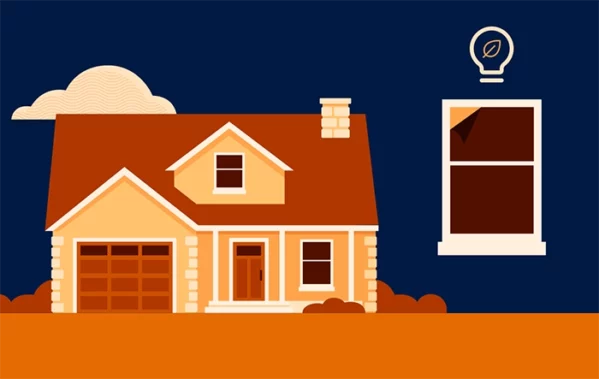Economic and industry news or trends
Your guide to achieving sustainable construction (+ benefits)
In recent years, it has become increasingly important for all industries to think about the impacts they have on the environment and what can be done to minimize them. A growing focus in the construction sector is sustainability.
What is sustainability in construction?
Sustainable construction is an approach to building that uses project management technology, eco-friendly building materials and green manufacturing techniques to improve the way people build and live.
Green construction, also known as green building, has many benefits for not only the environment but also for builders and their clients.
Let’s dive in and take a closer look at some of the benefits of green and healthy home building and how sustainable construction is leading to positive change in the industry.

How sustainable construction minimizes costs and increases value
Minimizing operating costs on construction projects is essential for the success of the industry. The use of sustainable resources is one of the quickest ways to do just that.
Using sustainable construction initiatives reduces costs by requiring less resources such as water and energy during the building process, which in turn, leads to less carbon dioxide emissions and increases the return on investment or ROI. Generally speaking, sustainable buildings will cost less to produce and will increase the structure’s long-term value.
The benefits of implementing sustainability in construction are being recognized, as the demand for green buildings and sustainable homes is growing at a fast rate. The online resource Statista projects the green building market to be among the fastest growing industries worldwide. The number of Leadership in Energy and Environmental Design building registrations has increased from 296 in 2006 to nearly 70,000 in 2019.
Ready to see what construction software
can do for your business?
Sustainability in construction means using less paper, more tech
New construction projects take a ton of time, planning and, let’s be honest, paper. By implementing a project management technology like Buildertrend, you can save some trees, reduce your environmental impact and simultaneously improve the way you run your business.
Landing leads, scheduling multiple jobs, tracking daily work, managing team members and subcontractors and seeing building projects through from start to finish are impossible to do with just a pen and paper. By implementing new technologies into your daily construction process, you’ll not only save yourself time and money, but you’ll also make a positive impact on the environment.
Sustainable construction protects the environment
Day by day, it’s growing more important to be aware and active in the movement to preserve and protect the global environment. Luckily, many builders like Daimon Doyle, product development manager at Lexar Homes, are already committed to “building healthy homes for healthy living.”
“Most green building programs such as Built Green®, National Green Building Standard, Earth Advantage and others recognize that in order for a home to be truly built correctly, it has to exceed typical building standards in these five areas: Energy efficiency, material efficiency, water conservation, indoor environmental quality and proper site selection and preparation,” Daimon said. “At Lexar, we address all those things and a few more in our high-performance approach by focusing on a product that is comfortable, healthy, efficient, durable and still affordable.”
Sustainable construction promotes environmental protection by coming up with ways to reuse natural resources such as water and energy. For example, green buildings can often be powered using renewable energy sources such as wind or solar and can be built with the ability to collect rainwater that is then used for toilets. And green buildings are typically built with recycled materials, which reduces the amount of waste and promotes the conservation of the environment.
Sustainability in the construction industry reduces waste
Construction is a multi-trillion-dollar industry, and according to the online source Construction Executive, it has a rework rate of up to 30%. With numbers like that, it’s essential to find alternative sustainable development and building methods using renewable construction materials to reduce the amount of rework and ultimately, lower the amount of waste.
“Traditionally, sustainability focuses mainly on the materials used and their origins,” Daimon said. “Using materials that are quickly renewable while at the same time, sourced locally in order to minimize transportation, minimizes the impact on raw materials and overall carbon output.”
With the use of renewable resources and sustainable building materials, green building is a great start in the effort to reduce the environmental impact of construction. By using renewable resources in addition to project management software, construction companies are able to drastically cut back on the amount of rework for each project with efficient communication, which decreases the amount of waste and saves time, energy, resources and money.
Improve sustainability and manage construction projects better with Buildertrend
Our team is always here to walk you through all the top-notch features and services Buildertrend has to offer. Schedule a demo today and see how we can help you transform the way you do business and positively impact the environment!
Sustainability in construction FAQs
Sustainability in construction means building greener by implementing sustainable practices like reducing waste, reducing carbon emissions, conserving energy use, and using recycled or renewable building materials.
Sustainable construction saves money and protects the environment. The use of recycled and renewable building materials and efficient project management tools like Buildertrend reduces waste and carbon footprint.
Sustainable construction practices offer multiple benefits:
- Save time – Reducing rework time means you can start a new project sooner.
- Save money – Reduced waste of energy, water, resources and time equates to more money in your pocket.
- Save the environment – Renewable and reusable resources have a lower environmental impact, and are included in other sustainable construction methods that lead to better biodiversity and less greenhouse gas emissions.

Bathroom design trends in 2024
With life being so fast-paced, bathroom designs are embracing the concept of personal sanctuaries. Here are the latest bathroom design trends for 2024.

How window tinting can increase energy efficiency in new builds
Here are five reasons why home window tinting is becoming an increasingly popular choice for and energy-conscious enhancement on new builds.

The 2024 housing market outlook
In this 2024 construction industry update, Buildertrend’s in-house expert shares insight into the lock-in effect, interest rates and the labor shortage.
Want to contribute to our blog?
We believe in building a community for construction – sharing is a big part of that. If you have industry expertise or a story to tell, your voice can reach thousands here.

